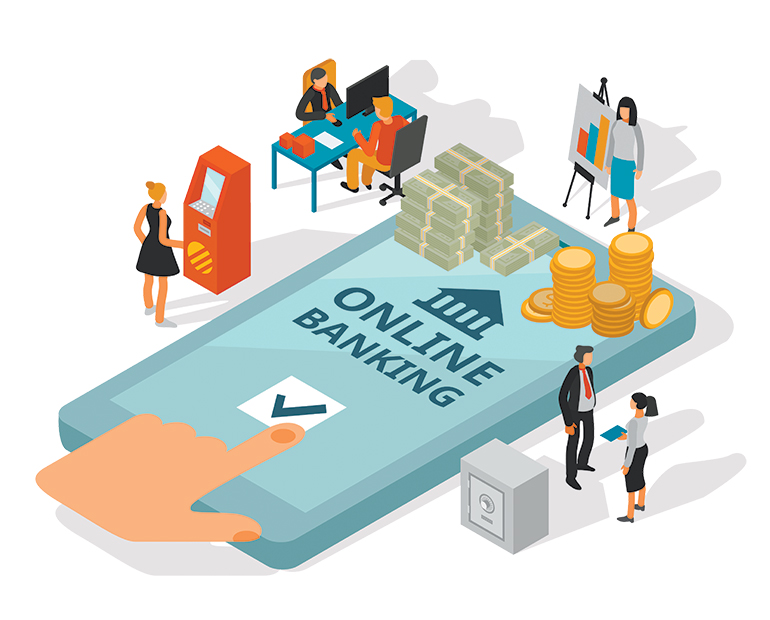Online banking still a rising trend

Newer technological innovations and advances have become the center of our lives for socialization, productivity, and access to our daily needs. Thus, the evolution of traditional banking — from banking activities that can only be done by visiting local branches, to mobile banking where banking activities can be done anywhere and anytime with just a few taps on technological devices — became a huge influence on financial stability as banking activities became more manageable and more convenient.
The birth of online banking started in 1983 as the Nottingham Building Society became the first bank to offer online services, becoming the blueprint for online banking where checking balances, paying bills, transferring money, and applying for loads from home are made possible in Europe. It was soon followed by a French bank, Minitel in 1984.
Trustly Group AB described first bank websites as “online brochures that have product formation, photos, contact numbers, and branch maps but no interaction with the customers.” With international banks starting to invest in online banking, consumers now are starting to see online banking as more beneficial as it has lower fees and better interest rates. With the increased use of modern technology and an internet connection, the establishment of financial technologies had begun.
Yet as online banking continuously grew, not everyone was open to online transactions and banking due to safety and security issues. But in 1995, the first online store was created by Amazon, an American multinational technology company, focusing on e-commerce services that offered a wider selection of products than those in-store with cheaper prices. eBay followed soon after. The increase in e-commerce sites paved the way for the utilization of online banking, boosting usage and acceptance of online financial services in the west, according to Trustly Group AB.
As eBay tries to standardize e-commerce, eBay merchants, especially small business owners, found the card payment method challenging since it only offers card payment which can be impractical on their part. In order to address this issue, an online service called Confinity launched with the aim of making payments online easier, collaborating with PayPal, an online payment platform for business services.
As mobile devices evolved, so did online banking adjust to mobile advancement, thus the development of mobile banking services. With this, Norwegian bank DnB became the first bank in the world to launch mobile banking.
Through mobile banking, checking balance accounts, topping up cell phone credit, and paying bills are made possible within a few taps. On top of the technological advancements, mobile banking services have evolved to include features such as locating ATMs, transferring money, and applying for banking products and services, as well as improving its security from relying on SMS alerts to one-time passwords (OTP) and alerts flagging unusual account activities.
“In short, you could carry your bank account in your pocket wherever you went,” Trustly Group AB said.
With the arrival of the pandemic, the world was greatly affected, causing disruption in society and causing a global economic crisis. Banks took this opportunity to improve the industry’s services by shifting to online, which later became a crucial instrument to attain economic growth and recovery amidst the said crisis.
The shift to online banking received positive outcomes as the world is now continuously maximizing the benefits of the online platform. According to Accenture, the use of online banking during the pandemic has improved the relationship between banks and consumers.
According to Accenture’s 2020 Global Consumer Study, while the banking industry has been increasing digital adoption, consumer trust, which is a vital factor in banking operations, has been decreasing at the same time.
Similarly, Alan McIntyre of Accenture Banking Group pointed out that the shift to online banking became a primary threat to attaining customer trust. It became important for banks to assess the pandemic and digital channels’ effect and changed consumer behaviors.
“The right approach will balance human and machine interactions, blending the convenience of more personalized and digital interactions with human assistance when needed to create more value. This would go a long way forward reinforcing banks’ relationships with their customers, which in turn can build trust, loyalty and benefits for both,” Mr. McIntyre said.
“To forge strong customer connections, banks must reimagine the digital services they provide and make those connections more personal and relevant,” he added.
As we step forward to the new normal, the rising trend of online banking continues in the future. According to Deloitte’s 2022 survey, the accelerated use of online banking services received positive outcomes and is expected to continue doing so in the following years. With the increasing number of online bank users, “online banking is likely to become a permanent fixture in the range of services banks offers,” the company said in a statement.
Nevertheless, as banks offer digital alternatives, competition in the industry grows, and providing digital solutions is not enough. Some banks still lack in digital aspects and some bank customers still prefer going to local branches instead of going digital in terms of their banking activities.
Deloitte encourages the use of hybrid banking services, where banks offer traditional and online banking as an option to make financing easier to bank customers.
“Many customers still want personal in-branch service, in the same way as a majority continue to value local branches. Banks can continue to focus on specific customer segments and offer wholly online banking for those customers who want it, but any bank that wants to expand its customer base beyond ‘digital natives’ is well advised to offer a hybrid service, a mix of online and in-branch services,” Deloitte said. — Angela Kiara S. Brillantes
